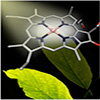Feb 04, 2025 (Nanowerk News) The efficient conversion of solar energy into storable forms of chemical energy is the dream of many engineers. Nature found a perfect solution to this problem billions of years ago. The new study ("Reassessing the role and lifetime of Qx in the energy transfer dynamics...
Printable molecule-selective nanoparticles enable mass production of wearable biosensors
Feb 03, 2025 (Nanowerk News) The future of medicine may very well lie in the personalization of health care—knowing exactly what an individual needs and then delivering just the right mix of nutrients, metabolites, and medications, if necessary, to stabilize and improve their condition. To make this possible, physicians first...
Nature-inspired nanotechnology uses genetic drugs as immunotherapy
Feb 03, 2025 (Nanowerk News) A large research team led by nanotechnologist Roy van der Meel rebuild the body's own proteins and fats into nano delivery vans that get genetic medicines to exactly the right place in the body. In a joint effort with researchers from Radboudumc they worked for...
Scientists discover unexpected plasma formation when microwaving CO2-derived carbon nanotubes (w/video)
Feb 03, 2025 (Nanowerk Spotlight) A standard microwave oven sits on a laboratory bench. Inside, a small sample of carbon nanotubes (CNTs) erupts into brilliant yellow-white plasma, reaching temperatures over 800 °C. This intense plasma forms spontaneously within seconds and maintains itself until the power switches off. Unlike conventional plasma...
Anti-melanoma activity found in green-produced nanosilver-chlorhexidine complex
Feb 03, 2025 (Nanowerk News) Melanoma is a fast-progressing skin cancer characterized by a high mortality rate after metastasis. Local chemotherapy could be considered a therapeutic approach only in stage 0 of progression (in situ melanoma) and in the postoperative phase after surgical removal of suspected skin lesions. For this...
Copper ‘nanoflowers’ bloom on artificial leaves for clean fuel production
Feb 03, 2025 (Nanowerk News) Tiny copper ‘nano-flowers’ have been attached to an artificial leaf to produce clean fuels and chemicals that are the backbone of modern energy and manufacturing. The researchers, from the University of Cambridge and the University of California, Berkeley, developed a practical way to make hydrocarbons...






